As we were planning and the arranging the Safari, I wondered if this would be a trip into the wild and uncontrolled or a Sunday drive through some managed theme park, like African Lion Safari, albeit on a larger scale. The former implies a randomness spawning various dangers; the latter removes that edge of the natural beauty.
The answer was somewhere in between.
The Serengeti is well travelled; at any one time there are usually a couple of safari vehicles in view. But they become invisible to the vastness of the planes and the animals that occupy them and rarely intrude on taking a good photograph. Generally, one is safe as long as they stay inside the vehicle. It is the armour. However, as our guide pointed out, elephants and rhinoceros are able to do severe damage to a car and have been known to do so when provoked.
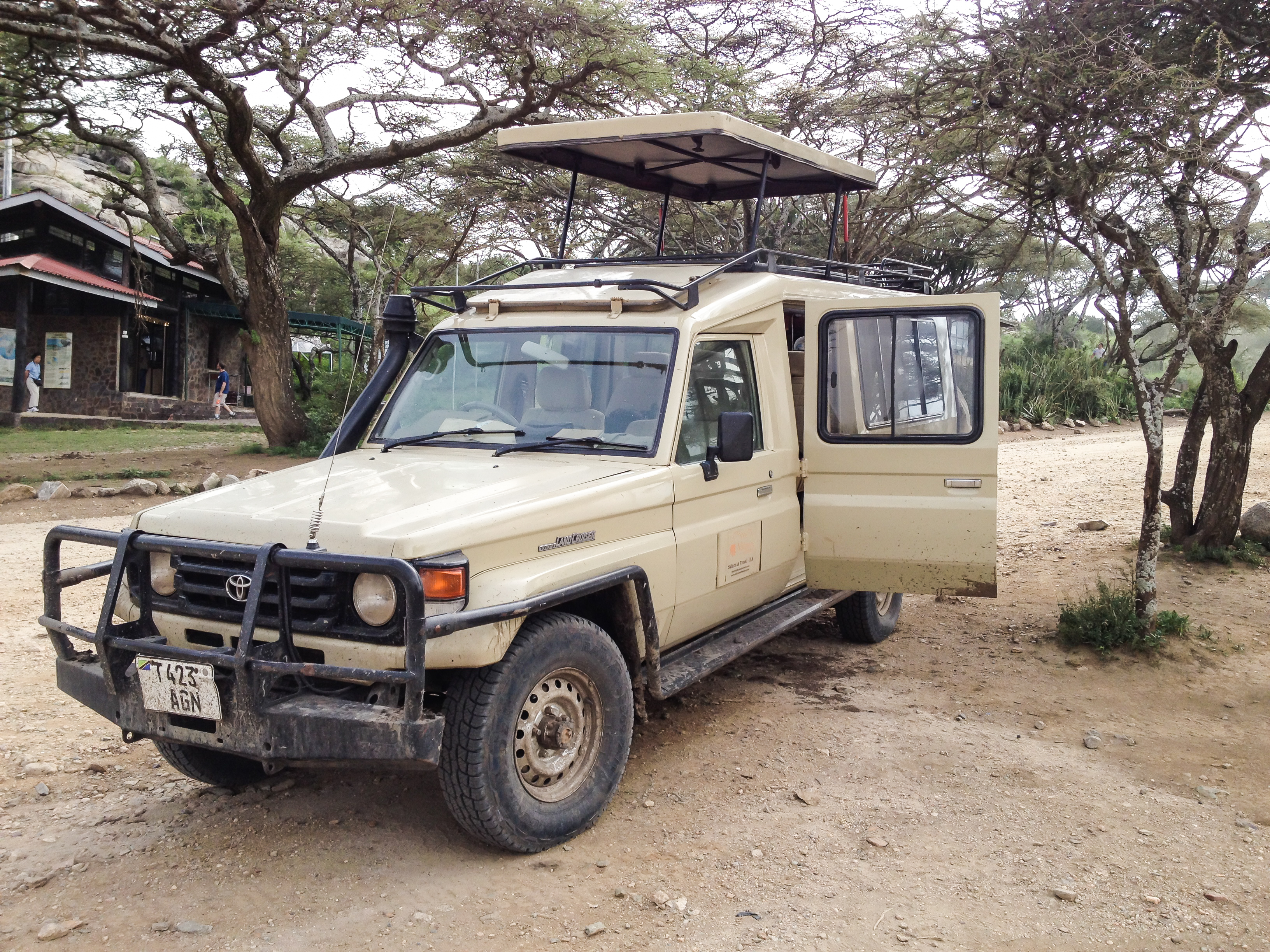
The Land Cruiser
The Toyota Land Cruiser with an open roof allowing a 360 view.
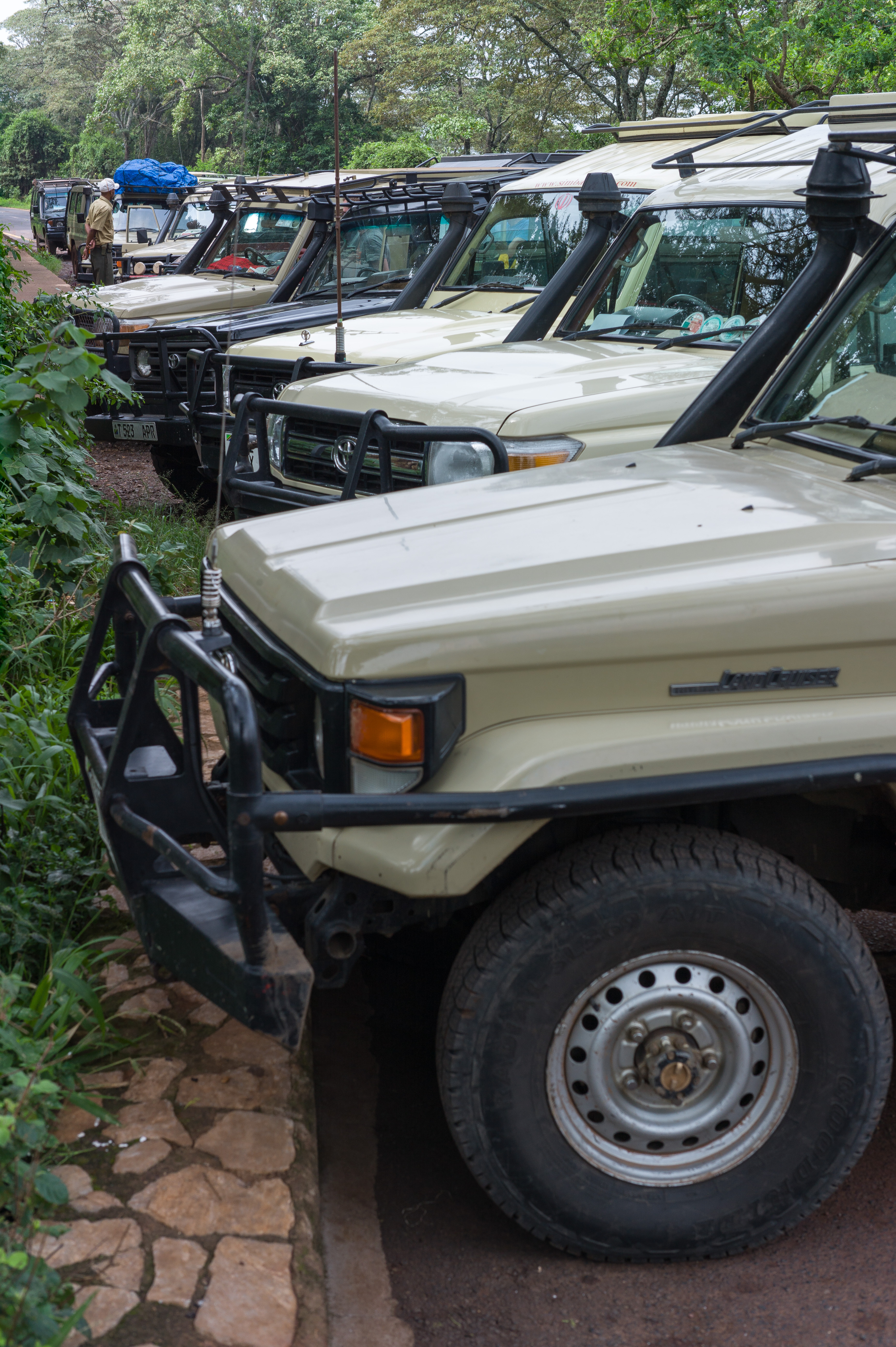
Standard Issue
The modified 4-wheel-drive Toyota Land Crusier is the most commonly used safari vehicle.
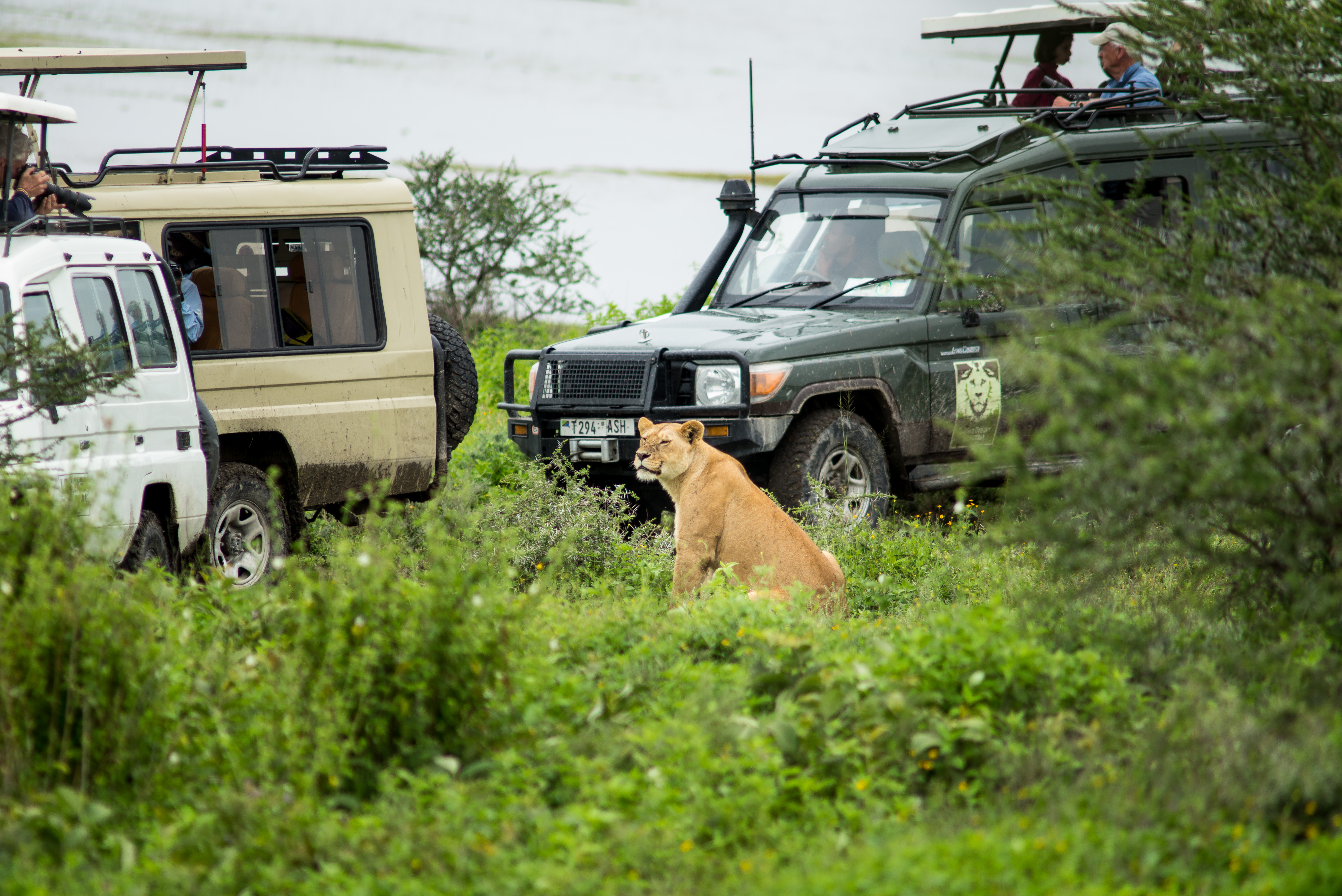
Lion and Jeeps
It’s not uncommon to arrive at a scene to find 3 or 4 other jeeps already on site. There are times when there are more, especially when it involves one of the “Big 5”

Elephant and Jeeps
A crowd gathers to watch a family of elephants take their morning bath.
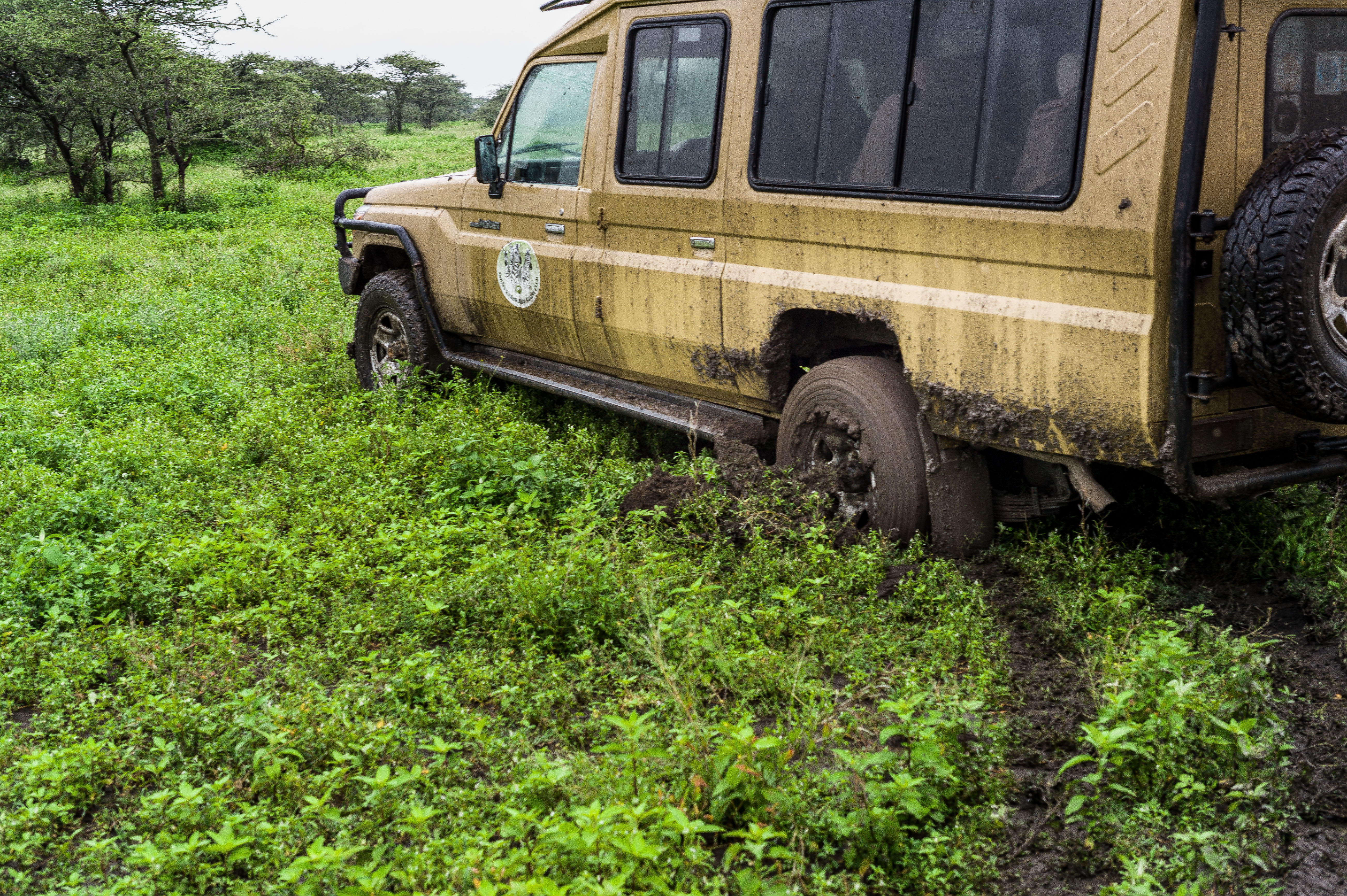
Stuck in the Mud
It is possible to get stuck, especially for those drivers that lack experience. Our driver avoided getting stuck. We awarded him an honorary license to drive in up to 20cm of snow.
The jeep is configured with 4 rows of two seats and thus is able to hold 8 people, including the driver. Our group was three people plus the driver which in my mind was a good size. It meant that each of us had a complete row and so when we stood up we could move to either the left or right side of the vehicle. It also meant the limited luggage space was divided among 3 rather than 7 passengers.
The accommodations, excluding one, were all excellent. Good food, good service, clean, well kept and large rooms. The exception was manageable as we were there just one day. Its attraction was its location; in the middle of the Serengeti.
We were advised by several people to camp in a tent. This way one hears the night noises that would be otherwise missed. So we stayed two nights in a tent.

Camping
Camping in Africa need not be primative.
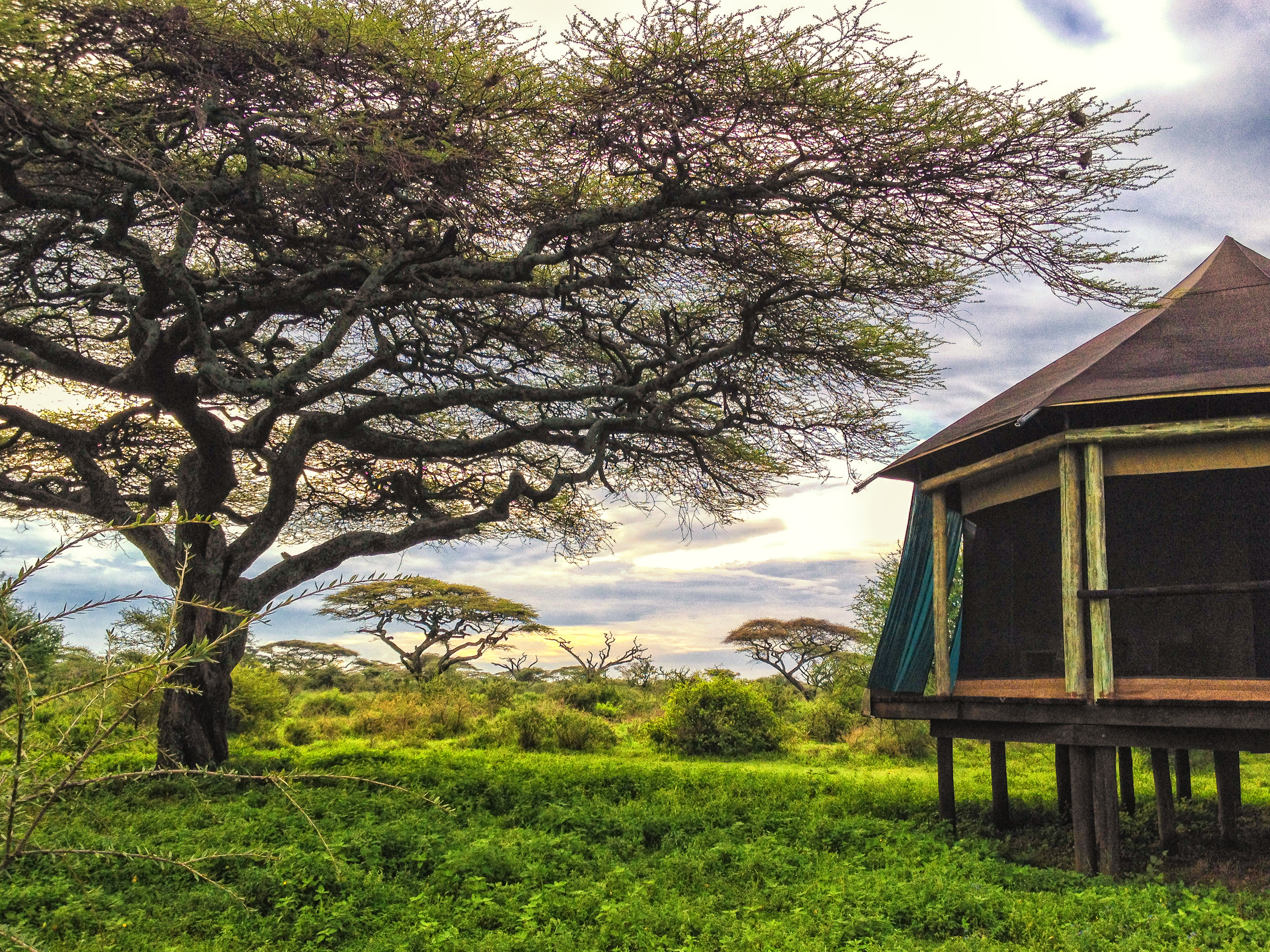
No fences
At night animals wander freely within the campsite.
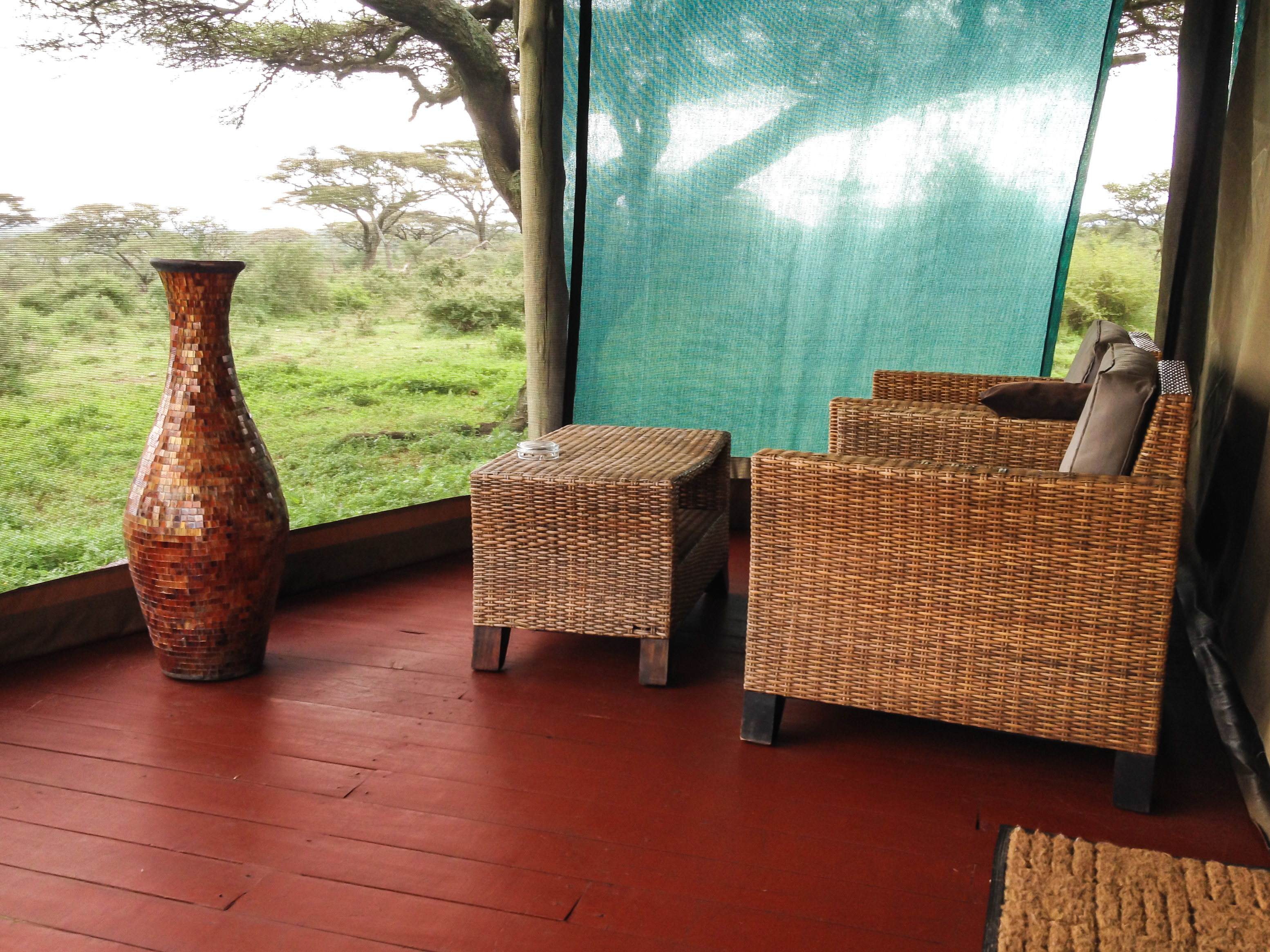
Enclosed sitting area

Bed

Washroom

Open Fire
The deck of the main lodge over looked Lake Masek.
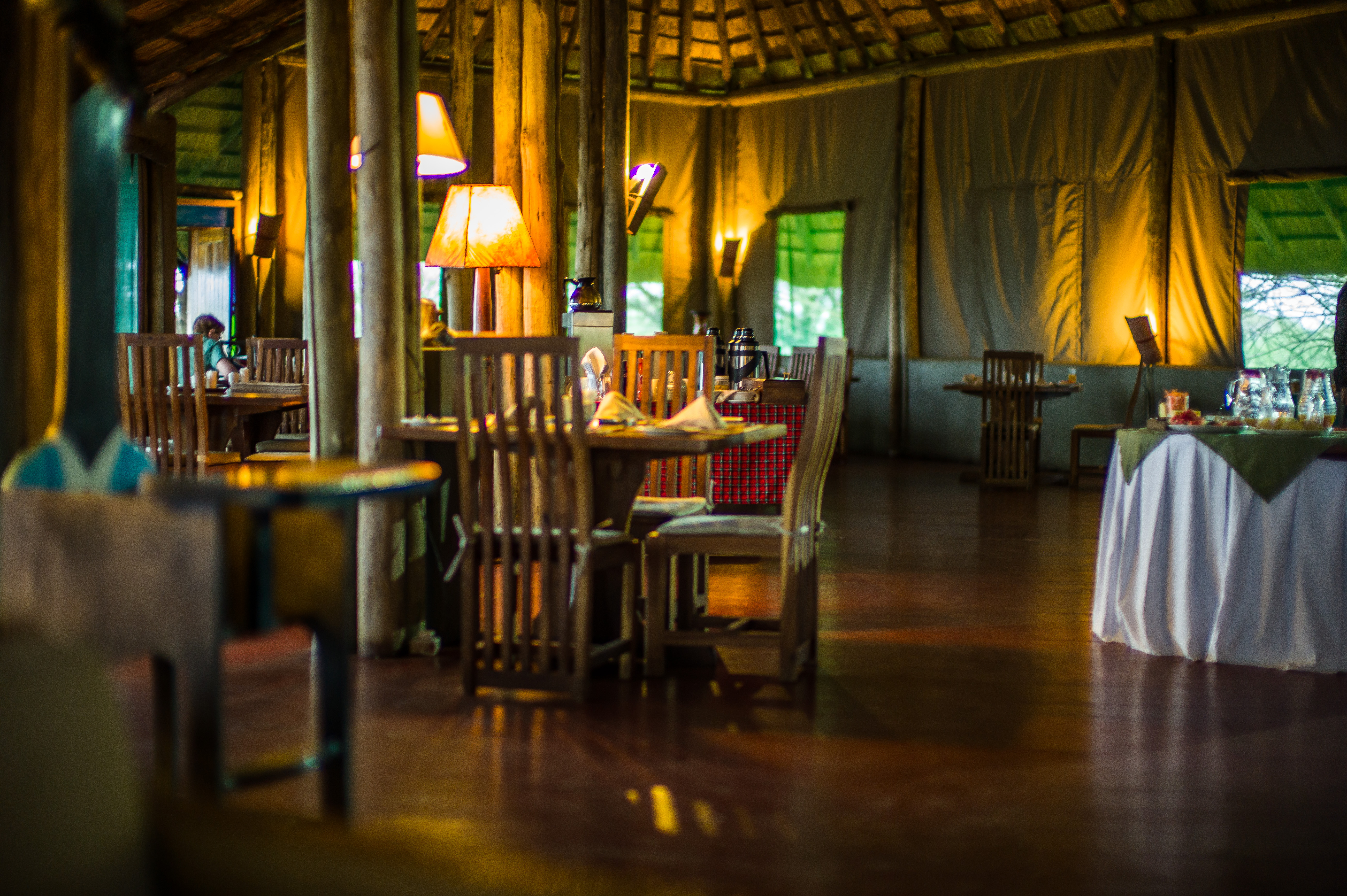
Dinning Area
The dinning area in the main lodge.
While dark, one is not to go outside. So after dinner in the lodge, we were guided back to our tent by security; a Maasai Warrior in traditional dress and a spear or was it a stick. During the night I saw a hippopotamus and I heard a lion, in addition to the various other things that go bump in the night.

I took four cameras, in addition to my iPhone and iPad: A Leica M (Type 240); Leica M9, Panasonic G1 and Leica DLux 3 Point-and-Shoot. I included the point-and-shoot because I thought there may be occasions where I would be uncomfortable using my “M’s”. This however did not come to pass. I included the G1 because of the zoom lens and the flexibility I thought that might offer, especially for “action” shots. It turned out to be of limited value. I chose to balance on the side of the sharpness of prime lenses and the bokeh and resolution of full frame over the marginal convenience of a zoom in providing optimal framing and automated focusing.
I carried a range of lenses, including: Canon FD F4.5 400mm; Canon FD F2.8 200mm; Leica Elmarit-M 90mm; Leica Noctilux-M 50mm; Leica Elmarit-M 28mm; Leica Elmar-M 18mm and a 45-200mm for the Panasonic G1 (90-400mm equivalent). I also had a 1.5x extender for the Canon lenses. I kept the 50mm loaded on the M9 for wide-angle shots. I switched between the 200 and 400 on the M (type 240). These three lenses were used for most of my shots on Safari.
On the first day the G1 and M with 200mm saw the most action. On subsequent days I almost completely abandoned the G1 for the M mounted with the 400mm. Of the 2500 picture I took on these 6 days the breakdown was as follows:
- Panasonic G1: 564
- iPad/iPhone: 203
- Leica M: 1568
- Leica M9: 166
While I carried several extra batteries I never really needed to draw down on them. The lodges where we stayed generally had sufficient power, and the safari vehicle itself had a power bar for charging.
The last piece of equipment was the beanbag. No tripods in a car, so the beanbag resting of the sill of the car roof was the way to stabilize the lens. It worked well. I filled it with 2kg of bird seed in Nairobi before our departure.

Leave a Reply